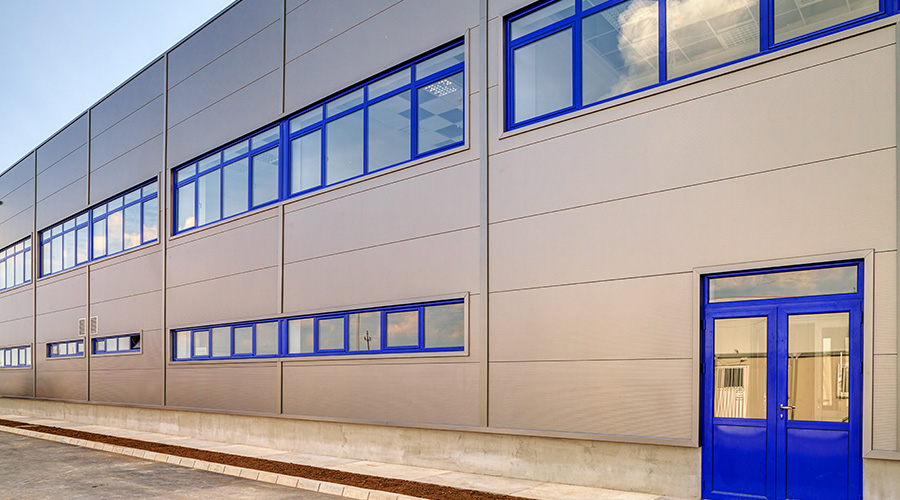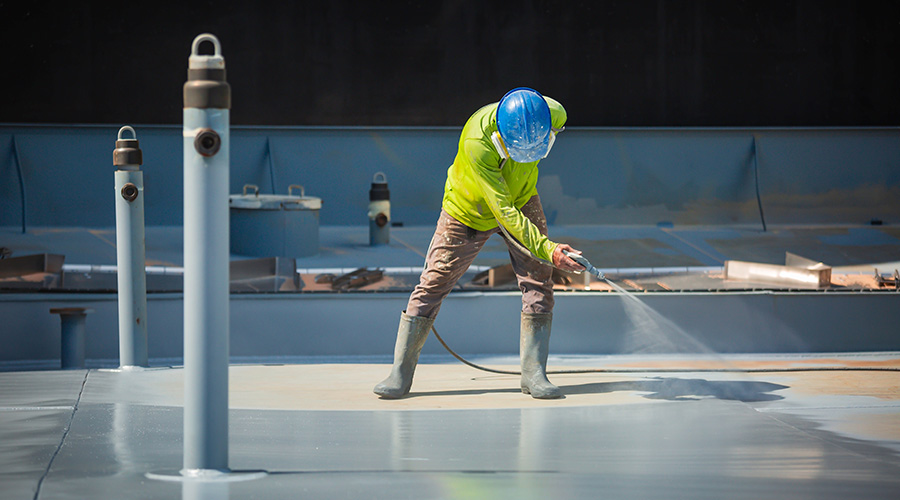Planning, Preparing for Painting
Successful indoor painting projects require more than just high-quality paints and coatings. Maintenance managers also must be aware of changes in the latest generation of paints, advances in paint application technology, and steps to prepare for and schedule projects to minimize interference with essential facility operations.
Air-quality Issues
In the past, managers typically selected paints based on long-lasting performance and resistance to degradation caused by harsh cleaners, heavy traffic and abuse. Specifiers selected semi-gloss solvent-based paints for trim and semi-gloss latex for walls and ceilings. Today, specifiers must consider not only higher demand for aesthetics, but also qualities such as low-volatile organic compounds (VOCs), low odor levels, anti-microbial properties, and better performance.
Recent increases in respiratory illnesses rates have focused greater attention on indoor air quality (IAQ). Children are especially vulnerable because of their relatively higher breathing rates.
Paints affect IAQ by emitting VOCs during application, drying and aging. VOCs in paints include any carbon-containing compound, such as acetone, benzene, dichloromethane, ethanol, methyl ethyl ketone, toluene and xylenes. When mixed with other airborne chemicals, they form ozone and smog. VOCs such as ethylene also can harm plants.
Since 1992, when the U.S. Environmental Protection Agency (EPA) set VOC limits, paint manufacturers have responded with new paint formulations. State and regional authorities often have tougher requirements than the EPA, so managers should check local limits before specifying.
For example, states in the Ozone Transport Commission, created under the Clean Air Act, use a maximum VOC level of 150 grams per liter (g/l) for non-flat and a level of 100 g/l for flat paints. Many interior latex paints on the market contain fewer than 50 g/l of VOCs.
The U.S. Green Building Council also offers guidance on the issue. Its Leadership in Energy and Environmental Design (LEED) certification program aims to improve building performance while lowering operating costs. Its LEED-EB program for existing buildings offers a specific credit for paint specifications. It rates paints as LEED compliant if they are low-VOC and low-chemical-component.
Some manufacturers publish their products’ VOC levels using standard white paint. But colorants produce added VOCs because they also contain organic solvents, defoamers, surfactants and dispersants. Anti-microbial paints provide mold, mildew and fungus protection in the dried paint, but they do not provide bacterial protection.
New paint formulations offer matte finishes that compete with semi-gloss and gloss paints for performance characteristics, such as ability to withstand dirt, wear and normal abuse. But they might not stand up to very heavy abuse or frequent scrubbing.
These finishes have the advantage of low reflection and glare. They display color at full intensity and hide imperfections in the substrate better than glossy paints. More hospitals, schools and commercial building are using matte finishes as attention to aesthetically pleasing environments increases.
Products that have all the environmentally friendly properties, as well as high performance, are more expensive. But managers must consider that cost of a painting project is 10 percent material and 90 percent labor.
Application Advances
How does a manager weigh the IAQ, cost and performance issues related to paints and coatings? Under the 10 percent-90 percent labor/material split for painting jobs, any steps that help a painter spend more time applying paint that performs well and lasts longer are worth the expense and the time during planning.
For example, getting to a job might be a challenge if it involves high ceilings and walls. Managers might consider using telescoping scissor lifts that pass through a doorway, yet extend to 30 feet high. Also, roller handle extensions can eliminate the need for lifts or scaffolds. If painters use rollers, the pressure fillers that continuously refill the roller are major time-savers.
Of the three application methods —brush, roller and spray — sprayers are the most economical. When used by experienced paint sprayers, they apply paint quickly and leave a uniform, high-quality finish. The low-pressure units result in the fewer airborne VOCs than high-pressure units. While they apply paint rapidly to flat walls and ceilings, they are especially effective on irregular or hard-to-reach surfaces.
Preparation Pointers
There is no substitute for high quality preparation. Such considerations as the following are accepted practice because they have enabled paint projects to stand the test of time:
- Follow manufacturer directions carefully when thinning paint.
- Keep substrate moisture below the manufacturer’s allowed amount.
- Make sure the substrate is clean and devoid of any chipping paint, loose material, rust, scale, oil and grease.
- Remove mold residue.
- Use the manufacturer’s suggested cleaning procedures.
- Use recommended cleaning products to avoid subjecting paint to incompatible chemicals that shorten paint life.
If a project involves recoating already painted surfaces, professionals should check for presence of asbestos and lead in the existing paint or have chips taken from all layers of old paint and checked in a lab. Using proper personal protective equipment and specialized removal products, they must remove or seal in contaminants.
Wet removal of these materials is the safest method. Paint strippers are available that will lift the old paint off the surface and encapsulate it in such a way that removes it without contaminating users, the air or nearby surfaces.
A Matter of Timing
When possible, managers should schedule painting projects when the space is unoccupied. But in some cases, this is not possible, providing another reason to select high-quality products that contain low VOC levels and high antimicrobial properties and that perform well. Managers will have to schedule painting less often if painters use such products. The lower the painting frequency, the easier it will be for painters to find some facility downtime to perform the task.
In schools, for example, these times include summer breaks, teaching meeting days and vacation periods. Also, when occupants are on individual vacations, painters will be able get in, do the painting, clean up and get out.
Inevitably, situations will occur when painting projects and facility use conflict, such as when contaminated paint removal must occur as soon as it is discovered — from mold after leaks or storm damage, for example. In these cases, moving occupants temporarily into alternative facilities is one solution. Painters also can isolate the work area from the occupied area with plastic sheeting and tape that protects occupants from the commotion, dust and debris that goes with painting projects.
Typically, painters using current paint formulations can get in and out of an office space and leave it ready to use in six hours. Managers can provide some flexibility for the painting project planner by using an annual calendar marked up to show time periods such as student vacations, hospital workers’ vacations, tenant moves and vacations, tenants annual meetings away from their office, and other similar low-utilization periods in facilities.
A small amount of planning can ensure that managers and planners use painters efficiently and avoid delays, such as having to stop in the middle of a project to start another due to last-minute changes in the use of the space.
Related Topics:











